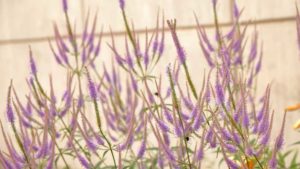Kelly Norris On How You Can Sell a New Landscape, With New Plants Included
 The industry hears a lot about emergents these days — the self-styled group of young professionals becoming active and engaged in their organizations and the workforce. But what about emergent plants, the cast of new varieties bubbling up from breeder backrooms in nurseries and labs around the world? Depending on your world-view, these gambits either represent the industry’s best guesses at consumer preference or the maneuvering necessary to influence their purchase decisions. Perhaps it’s a bit of both.
The industry hears a lot about emergents these days — the self-styled group of young professionals becoming active and engaged in their organizations and the workforce. But what about emergent plants, the cast of new varieties bubbling up from breeder backrooms in nurseries and labs around the world? Depending on your world-view, these gambits either represent the industry’s best guesses at consumer preference or the maneuvering necessary to influence their purchase decisions. Perhaps it’s a bit of both.
I can’t help but think that the contemporary shift in landscape aesthetics won’t precipitate new directions in consumerism, but it should if we’re paying attention. The strident landscape artists of our time (do I even need to utter Piet Oudolf’s name for you to know who I mean) have challenged traditional notions of arranging and presenting plants in gardens and how to manage spaces more thoughtfully and ecologically. While European practitioners have dominated the aesthetic, the American position seems fully staked on making landscapes beautiful and functional.
What plants will we garden with if we turn toward romantic, emotional, and functional landscapes? What plants will we embrace as players interacting toward a whole rather than mere novelties crammed into the frame of a tableau?
Our How, Where, and Why Need an About-Face
I recently caught up with Paul Westervelt, Annual and Perennial Production Manager for Saunders Brothers, Inc. in Piney River, VA, after a buying trip to the Netherlands. He recalled the experience of visiting both the global horticultural behemoth Dümmen Orange and the boutique specialty breeder Future Plants, on the same day.
“They are polar opposites,” Westervelt says. “Dümmen Orange primarily breeds for high-volume sales. If they can’t sell 100,000 of an item, they won’t bother. Future Plants would be happy with 10,000.”
The composition of the two companies’ product offerings couldn’t be more different. At Future Plants, Westervelt saw 3-foot tall sedums, various Veronicastrum, and Sanguisorba, all plants that have a place in the naturalistic aesthetic. The emotional reaction that comes from an Oudolf landscape is different in part because of the value placed on plants as a functionally aesthetic cohort. The user experience becomes multi-dimensional.
“[Future Plants] was celebrating wildness; [Dümmen Orange] was celebrating the quintessential box plant. And yet both had cool offerings I could take advantage of in our line,” Westervelt says.
His point: a plant’s supply chain provenance isn’t a predictor of its value.
“I want to grow a variety of stuff, anyway,” he says. “I can’t go too hard into Future Plants because it doesn’t sell as strong as I need it to, but I keep hoping this palette is going to be a bigger part of the industry in the future.”
Perhaps one of the limitations to sales numbers in these categories is crop cycle. Plants like Silphium terebinthinaceum, a personal favorite of Westervelt’s, aren’t robust enough for spring sales but quickly grow with increasing summer temperatures into something unsellable in a one-gallon pot.
“We have inadvertently shot ourselves in the foot just by the nature of our industry. By growing what sells year after year, it’s easiest to sell plants in the spring. Our total sales of perennials in summer and fall combined don’t come close to rivaling spring,” Westervelt says.
Yet you wonder when we’ll connect the dots for consumers. If progressive public horticulture continues to tease the imaginations of gardeners, as it shows every sign of doing, when will we harness the resources to make planting an attractive and appealing late-season activity? People are still outside, lest they give up their devotion to corn shocks, pumpkins, and planting tulips.
“Some of the stuff we were long on this year was new items that we didn’t have the time to sell to retailers,” Westervelt says. “We actually ate new items because we didn’t have the opportunity to educate retailers.”
Whether or not the onus rests on retailers exclusively is still an open debate. I think we have to look farther down the pike and consider how, where, and why we sell plants.
Disruptive Innovation Needed to Change Market Demand
From my vantage point, our industry focus on quick-turn SKUs and small, supply chain-minded innovations are self-excusing conditions. We’ve made our bed in a relatively mediocre landscape that we have a relatively challenging time selling to consumers. Rhetorical license allows me to be that generalizing, but taken together, the average national sentiment isn’t far off. Why do we not imagine a world where we can sell more plants because people want more plants? Change doesn’t come wholesale, but the future favors disrupters. The goal isn’t to drastically disrupt consumer behavior as much as it is to tilt the average.
In the U.S., programs like Plant Select deliberately set out to change the market demand for a different palette of plants in the Intermountain West. Their success both horticulturally and economically should serve as an example for how to authentically connect the gardening experience of a particular region with the supply chain.
“In the late 1980s, Colorado experienced an influx of new residents. The mindset of the country was that Americans could build or change anything in their environment to what they wanted it to be,” says Ross Shrigley, recently appointed Executive Director of the Plant Select program.
“These new residents drove demand for plants that were familiar to them like bougainvillea, maples, and boxwood,” he says. “Many gardening and landscape failures resulted.”
Plant Select changed all of that with its place-first consciousness. By embracing the steppe for its complexity and climate, the program created a narrative around a new palette of plants that began to interest gardeners. Shrigley says the future of the program looks even more diverse.
“If Plant Select continues to look for good plants to promote that are appropriate for the region they are to be planted in, we will have a successful program that has the added benefit of conserving biodiversity through its greater inclusion in landscapes.”










